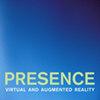用于增强现实的透明光场显示器
IF 0.7
4区 计算机科学
Q4 COMPUTER SCIENCE, CYBERNETICS
引用次数: 6
摘要
增强现实技术(AR)是一项引人注目的技术,受到了公众和业界的广泛关注。本文介绍了一种可用于AR应用的光学工具——全息光学元件(HOE)。HOEs是全息体光栅,具有透明和独特的光学特性。HOEs可以发挥光学元件的作用,通过衍射将入射波前转换为预定义的波前[Close 1975]。由于HOEs通常记录在薄膜中,例如光聚合物,因此它们在重量,成本和厚度方面具有各种优势。因此,已经有几种使用HOEs的应用,包括透明光场显示器[Hong et al. 2014]和头戴式显示器[Kasai et al. 2001]。本文章由计算机程序翻译,如有差异,请以英文原文为准。
See-through light field displays for augmented reality
Augmented reality (AR) is a fascinating technology that receives considerable attention of public and industries. Here, we introduce an optical tool, holographic optical element (HOE), which can be applied for AR applications. HOEs are holographic volume gratings, which have transparency and distinctive optical characteristics. HOEs can perform the roles of optical elements by transforming an incident wavefront to a predefined wavefront via diffraction [Close 1975]. Since HOEs are usually recorded in thin film such as photopolymers, they have various advantages in weight, cost, and thickness. Thus, there have been several applications using HOEs, including see-through light field displays [Hong et al. 2014] and head-mounted displays [Kasai et al. 2001].
求助全文
通过发布文献求助,成功后即可免费获取论文全文。
去求助
来源期刊
CiteScore
2.20
自引率
0.00%
发文量
8
审稿时长
>12 weeks

 求助内容:
求助内容: 应助结果提醒方式:
应助结果提醒方式:


